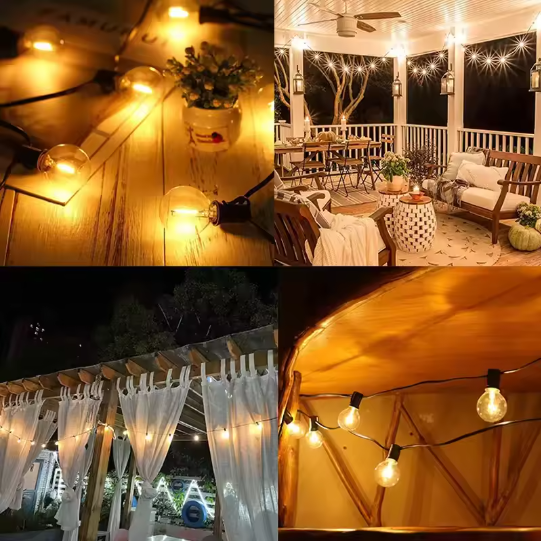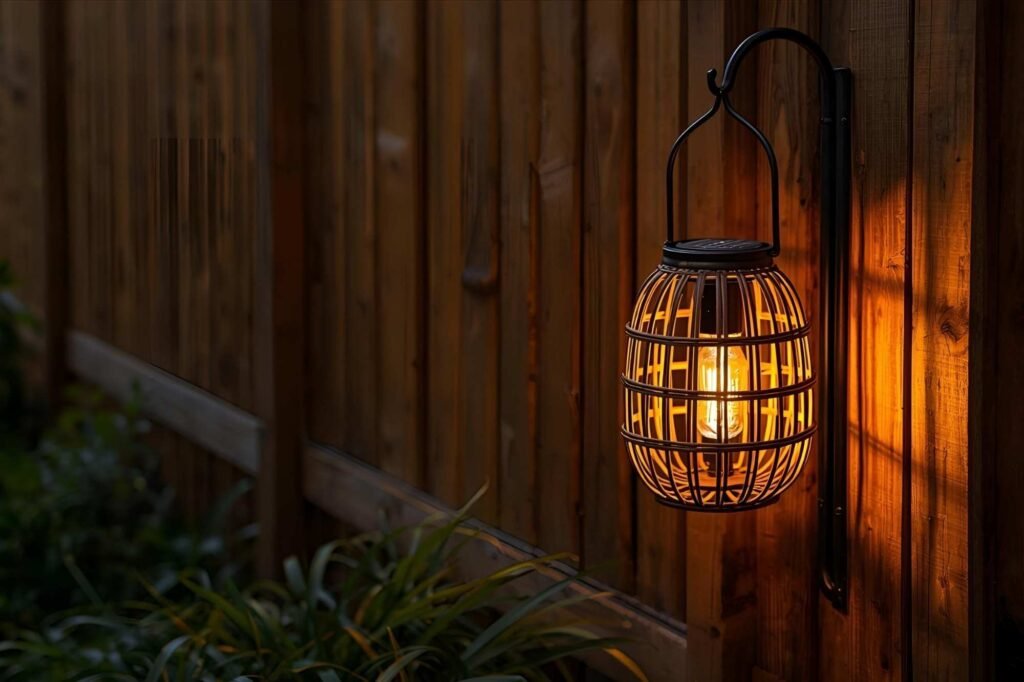Market: United States
Updated: 2025
This analysis compares wrought iron garden lights with aluminum, stainless steel, and solar‑integrated alternatives. The discussion emphasizes durability, photometric quality, lifecycle cost, and code‑aligned performance for U.S. residential sites.
What “wrought iron” means in exterior lighting
Wrought iron denotes low‑carbon iron worked mechanically for strength and decorative detail. In garden lighting, many products labeled “wrought iron” are actually mild steel or cast iron with ornamental styling. True wrought iron is uncommon today; instead, powder‑coated steel seeks the same visual weight at lower cost. The distinction matters because corrosion behavior and maintenance vary significantly across iron, steel, and non‑ferrous alloys.
Target ingress protection: IP65–IP67
Recommended CCT: 2700–3000K with CRI ≥90 for foliage accuracy
Side‑by‑side materials comparison
| Material class | Strengths | Risks | Best‑fit U.S. zones | Typical finish |
|---|---|---|---|---|
| Wrought/cast iron (steel) | Classic aesthetics, high rigidity, easy to forge decorative forms | High corrosion risk without robust coating; heavy; thermal bridging can hasten paint failure in freeze‑thaw | Arid or temperate interiors; avoid unprotected coastal sites | Zinc primer + polyester powder; periodic touch‑up |
| Die‑cast aluminum | Corrosion‑resistant oxide layer, light weight, good thermal dissipation for LEDs | Surface pitting in salt spray if coating fails | Most U.S. regions including snow belts | Powder coat over chromate/zirconium treatment |
| Stainless steel (304/316) | Excellent corrosion resistance; sleek contemporary finish | Higher cost and weight; tea staining near pools/coasts if not maintained | Coastal and chemical‑exposed areas | Electropolished or brushed with passivation |
| Composite/resin with UV stabilizers | Low corrosion risk; light; suitable for decorative forms | Lower thermal capacity; may chalk under high UV if not stabilized | Humid and coastal zones when weight is a concern | UV‑stabilized paint; molded color |
Photometric performance and visual comfort
Material choice influences thermal management, which in turn affects LED output and life. Aluminum housings dissipate heat efficiently, maintaining lumen output and color stability. Iron housings hold heat longer and may require derating or extended heat sinks. Regardless of housing, glare control depends on optics—louvers, diffusers, and beam shaping—and consistent white point for a coherent scene.
- Paths: 0.5–2.0 foot‑candles average with ≤10:1 uniformity is a practical benchmark for residential walkways.
- Color: 2700K warm white and high color rendering (CRI ≥90) reproduce bark and foliage accurately; mixed color temperatures should be avoided within a visual zone.
- Ingress: IP67 sealing is advised where sprinklers or snow are present; compression gaskets and quality glands prevent fogging and electrical faults.
Lifecycle cost: wrought iron vs. modern alternatives
| Metric (per fixture) | Wrought iron/steel | Die‑cast aluminum | Stainless 316 | Solar‑integrated head |
|---|---|---|---|---|
| Typical purchase price | $$–$$$ | $$ | $$$–$$$$ | $$ |
| Installed weight | High (staking/base must be robust) | Low | Medium‑high | Low |
| Maintenance frequency | Annual finish inspection; touch‑ups common | Low | Low‑medium (polish/passivation) | Battery check every 2–4 years |
| Power architecture | 12V/120V wired | 12V/120V wired | 12V/120V wired | Solar with battery; no wiring |
| Best use | Traditional gardens, statement pieces | Broad residential use | Coastal and premium modern sites | Remote areas, retrofit paths/patios |
| Dollar symbols are relative bands based on 2024–2025 U.S. retail and contractor catalogs. | ||||
Real‑world example of decorative ambiance lighting

Explore current assortments under Solar Garden Light and the broader garden lights catalog.
Finish systems and corrosion control
Best practices for iron and steel
- Use a zinc‑rich primer plus polyester powder coat; target 80–120 μm total dry film thickness.
- Seal seams and hardware penetrations; stainless fasteners with isolating washers reduce galvanic activity.
- Provide drain paths and drip edges to minimize standing water and ice expansion.
When to prefer non‑ferrous housings
- Within three miles of salt water or in de‑icing salt zones, die‑cast aluminum or 316 stainless typically outlasts coated iron.
- Where weight limits exist on decks or pergolas, aluminum’s mass advantage improves safety and installation speed.
Performance specifications to request
- Photometrics: beam spread (10–25° accent, 36° general), shielding options, and target illuminance on task surfaces.
- Electrical: for wired systems, verify driver mode (constant current vs. constant voltage), surge protection, and −20 °C ambient rating for northern states.
- Optics and color: warm‑white 2700–3000K and CRI ≥90 to enhance wood, stone, and planting palettes.
- Ingress protection: IP65 minimum; IP67 recommended around sprinklers, snow throw zones, and low bollards.
Data chart: maintenance drivers by climate zone (field‑reported)
| U.S. climate region | Primary maintenance driver | Recommended housing | IP rating | Notes |
|---|---|---|---|---|
| Snow Belt (MN, MI, NY) | Freeze‑thaw water ingress | Die‑cast aluminum or sealed stainless | IP67 | Use compression gaskets; avoid unsealed iron seams |
| Coastal (FL, CA coast) | Salt spray corrosion | 316 stainless or marine‑treated aluminum | IP65–IP67 | Rinse fixtures quarterly; inspect coatings |
| Arid (AZ, NV) | UV exposure and heat cycling | Aluminum with UV‑stable powder | IP65 | Vent for thermal relief; check driver temps |
| Humid Southeast | Biological growth, moisture | Aluminum/stainless; sealed optics | IP65–IP67 | Use anti‑wicking cable glands |
Solar vs. wired: where each excels
- Solar heads suit retrofits, remote corners, and gardens where trenching is impractical. Modern units with LiFePO4 batteries and MPPT charging can achieve full‑evening runtimes in mid‑latitude states with clean panels and winter‑biased tilt.
- Wired low‑voltage systems deliver tighter control, higher peak output, and compatibility with advanced dimming networks—ideal for large estates and frequent‑use spaces.
See curated options under Solar Garden Light or explore complete assortments in garden lights.
Decision framework: choosing the right build
| Design goal | Recommended material | Fixture type | Rationale |
|---|---|---|---|
| Historic or traditional aesthetics | Wrought‑look steel with premium coating | Lanterns, scroll‑arm posts, path heads | Delivers period styling; require planned maintenance |
| High durability with low upkeep | Die‑cast aluminum | Path, bollard, wall‑wash | Strong corrosion resistance and heat dissipation |
| Coastal exposure | 316 stainless | Pier lights, fence posts | Resists chloride attack; maintains finish longer |
| No‑trench retrofit | Aluminum/composite housings | Solar heads, string lights | Self‑powered; quick installation |
Frequently asked questions
Citations and further reading
- U.S. DOE Solid‑State Lighting program — outdoor reliability and thermal management: https://www.energy.gov/eere/ssl/
- Illuminating Engineering Society (IES) — residential exterior lighting practices (LP‑2, RP‑8 contexts): https://ies.org/
- NOAA coastal corrosion and salt‑spray context for materials selection: https://www.noaa.gov/
- NREL NSRDB — solar resource considerations for garden lighting: https://nsrdb.nrel.gov/
Product category references for internal linking: Solar Garden Light and garden lights. The comparative insights synthesize themes commonly discussed across high‑ranking U.S. landscaping and lighting articles available via Google Search in 2024–2025; sources are used for context and verification but wording here is original.


